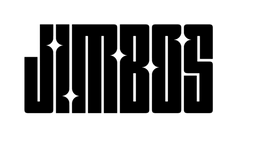How to Clean and Protect Seat Belts Safely
Seat belts are one of the most overlooked parts of a car interior — but they’re also one of the dirtiest. Sweat, body oils, and food residue build up over time, leaving them discolored and sticky. In this guide, you’ll learn how to safely clean and protect seat belts without fraying, water spots, or weakening the webbing.
Estimated Reading Time: ~8 minutes
Why Cleaning Seat Belts Matters
Seat belts come into contact with skin, clothing, and hands every time you drive. Over time, that contact transfers oils, sweat, lotions, and bacteria that can cause staining and odor. A clean seat belt isn’t just about appearance — it’s about hygiene and safety. Contaminants can break down fibers over time, reducing their strength.
- → Keeps fabric strong and flexible.
- → Removes odor and bacteria buildup.
- → Improves the overall feel of your interior.
Step 1: Inspect the Seat Belt
Pull the belt out completely and clip it to keep it extended. Look for any fraying, fading, or damage to the stitching. If you notice tears or stiffness, replacement is safer than cleaning — damaged belts can fail under stress.
Step 2: Vacuum Loose Debris
Before wet cleaning, vacuum the belt using a soft brush attachment to remove dust and crumbs. This prevents grinding dirt into the fibers during scrubbing.
Step 3: Clean with a pH-Balanced Interior Cleaner
Spray Complete Cabin Cleaner directly onto a microfiber towel or Scrub Buddy Pad — not directly onto the belt. Gently scrub from top to bottom with light pressure, following the belt’s weave. Avoid over-saturating the material.
Reapply as needed until the towel lifts no more dirt.
Deep Clean Without Damage
Complete Cabin Cleaner lifts oils, grime, and stains from seat belts safely — leaving no residue or stiffness behind.
Shop Complete Cabin Cleaner Buy on AmazonStep 4: Blot and Dry
Use a clean, dry Softer Than Soft Microfiber Towel to blot out moisture and dirt. Avoid aggressive rubbing — this can fuzz the fibers. Allow the belt to air dry fully before retracting it. You can use a fan or blower to speed up drying, but avoid heat sources.
Step 5: Deodorize and Protect
Once dry, lightly mist the belt with Complete Cabin Cleaner again and wipe dry for odor control. Optionally, apply a light coat of All Dressed Up diluted 4:1 on the plastic buckle area — never on the belt itself — to keep everything looking clean and factory-fresh.
Seat Belt Cleaning Comparison
| Method | Result | Safety Level |
|---|---|---|
| Household degreaser | Harsh on fibers, leaves residue | Low |
| Steam cleaning | Removes grime but risks fraying | Medium |
| Complete Cabin Cleaner + microfiber | Safe, residue-free cleaning | High |
Preserve Safety and Comfort
Clean seat belts regularly with Complete Cabin Cleaner to maintain strength, hygiene, and comfort every time you drive.
Shop Complete Cabin Cleaner Buy on AmazonStep 6: Maintenance Routine
For most cars, cleaning seat belts every 2–3 months is ideal. If you live in a humid climate or drive daily, inspect and wipe them down monthly. This quick maintenance prevents stains and extends longevity.
Pro Tips for Seat Belt Detailing
- → Always clean top to bottom to avoid water marks.
- → Never use high-pressure air or steam directly on belts.
- → Keep belts extended until fully dry to prevent mildew.
- → Avoid harsh chemicals — they weaken webbing fibers.
- → Replace belts showing stiffness or discoloration.
Related Reading
- The Ultimate Interior Detailing Guide for Beginners
- Interior Detailing Safety Tips You Probably Missed
- How to Detail a Family Car Interior (The Real-World Way)
- 10 Interior Detailing Mistakes You’re Probably Making
- The Importance of Final Inspections in Interior Detailing
FAQs
What’s the safest way to clean seat belts?
Use a pH-balanced cleaner like Complete Cabin Cleaner with a microfiber towel. Avoid saturating the belt or using harsh chemicals.
Can you steam clean seat belts?
It’s possible but risky. Excessive heat or moisture can weaken fibers and adhesives. Stick to gentle hand-cleaning for safety.
How do I remove seat belt odors?
Clean with Complete Cabin Cleaner and allow belts to air out completely. Persistent odors may indicate trapped moisture or mildew under the retractor housing.
Should I apply dressing or protectant to seat belts?
No. Dressings like All Dressed Up are great for trim but should never be used on seat belt fabric — they can cause slippage.
How often should I clean seat belts?
Every 2–3 months, or more often if you drive frequently or in humid environments.



